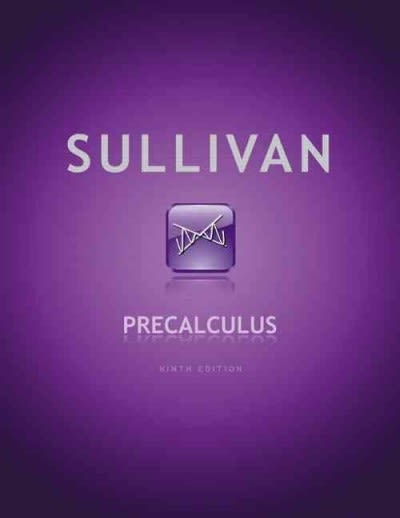Question
1. A physical education teacher observes a strong and linear relationship between the number of sit- ups a student can do in one minute and
1. A physical education teacher observes a strong and linear relationship between the number of sit- ups a student can do in one minute and the amount of time it takes the student, in seconds, to complete a 40-yard dash. If the physical education teacher wants to predict amount of time to complete a 40-yard dash based on number of sit-ups that can be completed in one minute, which variable should go on the vertical (or y) axis of the scatterplot? A. Number of sit-ups, because it is the explanatory variable. B. Number of sit-ups, because it is the response variable. C. Amount of time to complete the 40-yard dash, because it is the explanatory variable. D. Amount of time to complete the 40-yard dash, because it is the response variable. E. This question cannot be answered without knowing if the relationship is positive or negative.
2. You read the following statement in a news article: "Mothers who spend more time on social media sites about motherhood experience higher levels of a hormone known as cortisol." From this statement, we should conclude that A. spending more time on social media sites about motherhood causes an increase in levels of the cortisol hormone. B. the relationship between time spent on social media sites about motherhood and levels of the cortisol hormone is positive. C. the relationship between time spent on social media sites about motherhood and levels of the cortisol hormone is negative. D. the relationship between time spent on social media sites about motherhood and levels of the cortisol hormone is strong. E. the relationship between time spent on social media sites about motherhood and levels of the cortisol hormone is moderate.
3. Consider the following five statements. Given what you have learned about correlation and regression from Chapters 14 and 15, only one of these statements can be correct. Which statements is correct? A. The correlation between home price (in dollars) and distance of the home from the nearest school (in miles) is r = -2.75. B. The correlation between political party affiliation and favorite ice cream flavor is r = 0.42. C. The correlation between eye color and height is r = -0.21. D. The correlation between number of letters in a person's name and whether or not the person likes pineapple as a pizza topping is r = 0.87. E. The correlation between hours spent working per day and minutes spent studying per day is r = -0.69.
4. An apartment rental company compiles information about the square footage and amount of rent per month for several apartments in a large city. All of the apartments in the sample are between 485 square feet and 1800 square feet. There is a strong, positive, and linear relationship between the square footage and amount of rent (in dollars) of these apartments. The regression equation to predict amount of rent based on square footage is as follows: Predicted rent = -162 + 2.25 (square feet) From the above information, we can predict that an apartment that is 845 square feet will have rent per month of approximately _________ dollars. A. 1007.00 B. 1901.25 C. 1739.25 D. 685.25 E. 2061.25
5. This past Halloween, data was gathered from several trick-or-treaters about the amount of time they spent trick-or-treating (in minutes) and the amount of candy they obtained (in grams) while trick-or-treating. The relationship between these variables is linear and strong. The regression equation that can be used to predict amount of candy obtained from time spent trick-or-treating is: Predicted grams of candy = 296.90 + 15.45 (minutes spent trick-or-treating) Which one of the following statements is a correct interpretation of this regression equation? A. As minutes spent trick-or-treating goes up by one, we predict grams of candy to increase by 296.90. B. As minutes spent trick-or-treating goes up by one, we predict grams of candy to increase by 15.45. C. As grams of candy goes up by one, we predict minutes spent trick-or-treating to increase by 296.90. D. As grams of candy goes up by one, we predict minutes spent trick-or-treating to increase by 15.45. E. 15.45% of the variability in grams of candy can be explained by the regression equation.
Step by Step Solution
There are 3 Steps involved in it
Step: 1

Get Instant Access to Expert-Tailored Solutions
See step-by-step solutions with expert insights and AI powered tools for academic success
Step: 2

Step: 3

Ace Your Homework with AI
Get the answers you need in no time with our AI-driven, step-by-step assistance
Get Started


